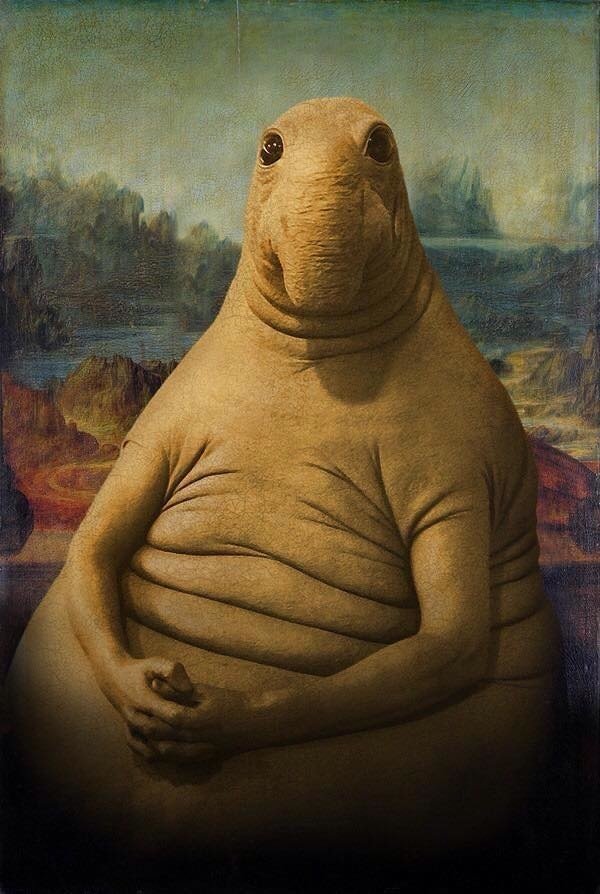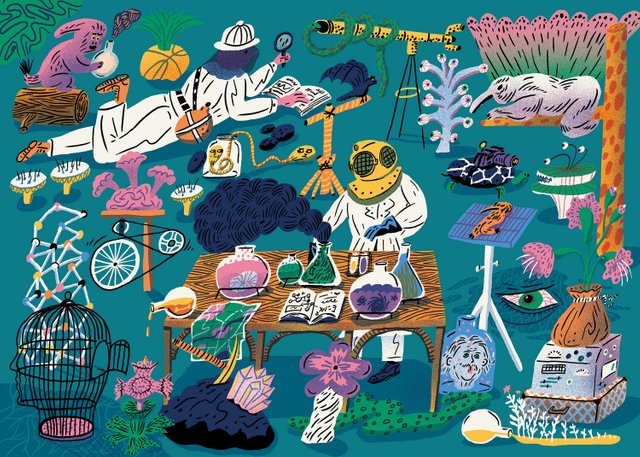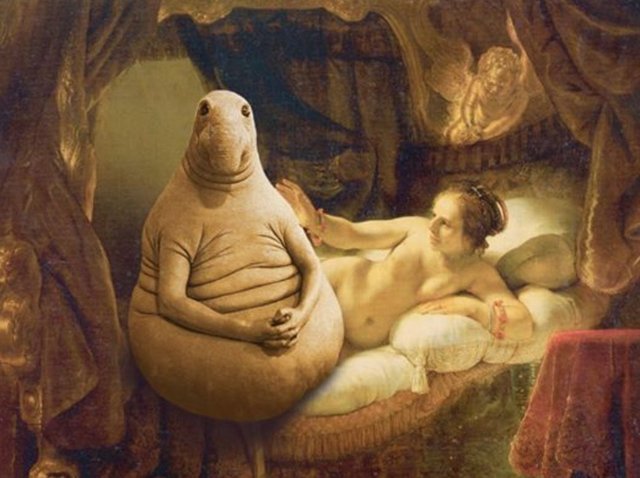Seals and revolution. What is memetics and why memes are not only funny pictures from the Internet. Study.
It is very interesting. I wish you a pleasant reading. !!
Today the word "meme" is widely heard, and everyone almost knows what it is and what memes they are. But do everyone know that memes are interested in just two areas in science - memology and memetics? And why do both representatives say that we are experiencing a real "mem-revolution" today? To understand this, we begin the publication of a series of articles devoted to entertaining memology. Our first material will tell about the history of memetics - and about why seals on the Internet may not be as harmless as they seem.

In 2011, the publication Time talked about the study, the subject of which were Internet memes. The work of Kate Miltner, dedicated to memes with seals, was written to defend the master's thesis on the basis of median science. In 2017, several universities have already opened entire training programs for those wishing to study Internet memes, including one of the oldest British universities - Cambridge.
The creators of these training programs talk about the "mem-revolution". Today, memes are used by almost everyone. For observers of the development of mass culture, an increase in the number of memes and the growth of their popularity is an obvious fact. Many people imagine a meme as a funny picture or video. But, maybe, a meme is something more?
In 2016, four large European universities, together with the University of Harvard, also created a two-year program for the study of memes. However, their program provides for preparation for the protection of a master's degree in evolutionary biology. It would seem, and where are funny pictures on the Internet? Let's try to understand this issue from the very beginning.

A selfish meme.
There is a popular belief that "meme" is a derivative of the English word "memory", that is, "memory," but this is not entirely true. The creator of the word "meme" is the English scientist Richard Dawkins, a popular biologist and ethologist. In one of his most famous books, The Selfish Gene (1976), Dawkins discusses what distinguishes a person from other living things on Earth, and concludes that the main difference is culture. Taking as a basis the analogy of the gene as a unit of hereditary information, Dawkins began to look for a term that would denote a unit of cultural information. Taking the ancient Greek word "μιμητής" ("mimetes") - "imitator, imitator", Dawkins conveniently cut off his first "syllable" from his derivative and received the word "meme".
Defining the meme as a unit for the transfer of cultural heritage, Dawkins first emphasizes the meme's ability to reproduce itself or replicate, like a gene. Memes spread from one person to another through the process of imitation. "Good" memes are those that have high survival in a cultural environment, that is, they are endowed with a psychological appeal for people who readily copy them for many generations. Dawkins emphasizes that copies of memes must be identical or almost identical to the original - just as genes retain their properties when transferring hereditary information.
In addition, among the memes there is competition, which is expressed in the struggle for a place in human memory and for the attention given to the memo - "time on the radio and television, the area on billboards, on newspaper pages and on library shelves."
What can be meme? According to Dawkins, memes can be melodies, ideas, winged expressions, common representations (for example, about God), as well as "buzzwords, ways of cooking soup or arches." Memes can support each other and exist together, in the form of a single complex - memcomplex, as a co-adapted stable set of memes. As an example of a memo complex, Richard Dawkins, as a convinced atheist, certainly leads the church "with its architecture, rituals, laws, music, fine arts and written testimonies."
The scientist also repeatedly emphasizes the viral nature of the meme, its "infectiousness", the ability to parasitize the human brain - its carrier. Dawkins makes an unexpected conclusion about the evolution of the human brain, which, in his opinion, is larger than the brain of primates, precisely in connection with the need to "accommodate" a large number of memes. The competition of genes led to the appearance of a man with a brain capable of imitation - so there were memes that use this ability.
Despite the fact that Richard Dawkins himself was rather skeptical about his theory, understood its speculative nature and even called it "speculation", in his opinion, it could solve rather ambitious tasks related to the issues of origin and differences of cultures in different parts the globe. Inspired by the ideas of Charles Darwin, the English scientist wanted to transfer the idea of the gene replicator from biological to anthropological regularities and even derive a law universal for the whole universe.
As a result, Dawkins came to the conclusion that all life forms - terrestrial and unearthly - must exist according to the fundamental rule: all living things evolve as a result of natural selection of self-replicating units - genes, memes or any others not yet known to science.

Memetics as a science.
This theory took shape in the theory of consciousness and culture. The name for it in 1983 was proposed by the American physicist Douglas Hofstadter - "memetics", by analogy with genetics, and in 1988 the word "meme" was entered in the Oxford dictionary with the meaning "an element of culture or system of behavior transmitted from one individual to another by means of imitation or other non-genetic way ".
However, at this level of generalization, there are quite a lot of questions and problems related to the application of memetics and its further design into science.
The first is the measurement problem. How to measure a meme and how to record the fact of its self-reproduction, transmission and distribution? How to properly describe the meme and determine its contents?
In attempts to solve this problem, Memetian scientists were conditionally divided into internalists - those who, following Dawkins, understand Mem as a unit of information existing in the brain; and those who understand memes as external, observable cultural artifacts, - externalists. The internalists argue that with the development of technology and neuroscience, direct monitoring of memes will become possible and this will ensure the development of memetics. The externalists, in turn, come into conflict with anthropology, which does not view culture as a complex of separate cultural units or artifacts.
The second problem is related to the definition of a meme. It is known that a gene is a specific sequence of proteins. Then if meme as a unit of cultural information is like a gene - a unit of hereditary information, then how is this information presented in the meme? Dawkins himself believed that the meme is "a structure in the nervous system of individuals" that is in their brain, but so far it has not been confirmed and not refuted.
British physicist David Deutsch in the book "The Beginning of Infinity: Explanations that change the world" discusses with Dawkins and Susan Blackmore, the memeber researcher, about the definition of the meme and the mechanism of its generation. Deutsch is convinced that memes can not be generated by imitation, and believes memes are knowledge, "hypothetical explanations, which, before someone else can take them, are criticized and tested." It is memes that make up the mechanism of creative thinking and are responsible for human evolution.
It turns out that the Memetists themselves do not always agree on what can be considered a meme. Until now, there is no single point of view on whether memes can be considered emotions, whether perception and visual memory can be affected by memes.
The third problem concerns the place of memetics in the body of scientific knowledge. Here are the most tangible contradictions. Memetics is not a scientific "mainstream", therefore its "scientific character" has to be assessed also by how its positions correlate with related sciences.
Memetics as a theory of evolutionary psychology comes into conflict with anthropology, ethology, sociology, linguistics, and later works on memetics - with neuroscience and cybernetics. Questions related to the origin of cultures, language, the complication of human social behavior in the process of human development, memetics considers from the point of view of replicating the meme in one form or another: ideas, words, sounds, manners of behavior - for memetics, the mechanism of the process of change is more important, but not its object, causes or conditions.

T-memes against mem-machines.
In this context, the look of Susan Blackmore is indicative. Blackmore is one of the largest researchers involved in the study of memetics. She considers the changes in technology as the evolution of the meme into a new replicator - t-mem (technological meme) (S. Blackmore, Consciousness, 2010): "We continue to cling to the idea that if we created machines, we can do with them all we want. But it's not us, but techno-memes fill the world with machinery, which copies, recombines, stores and distributes them. They are rapidly evolving, while human bodies remain the same. " We see that when considering the process of technological revolution, the mechanism of the process of change remains in its focus (replication of t-memes), but not its causes, conditions and participants.
Susan Blackmore believes that since we do not choose what to copy ourselves, not only the most useful things and abilities, for example, the methods of breeding fire, but also "side", unnecessary things - "things-parasites" are self-reproduced. In Blackmore's concept, people are meme machines used by memes for reproduction and copying, and language, religion, art are parasites that evolved with the person and came to symbiosis with us, which is why we do not feel their danger.
Blackmore insists: memes and t-memes are replicators, whose appearance was associated with serious crises for humanity, which, perhaps, miraculously escaped death. Since memes and t-memes are self-centered replicators, they use people to pump out the resources necessary, for example, to produce more computers and other digital high-tech devices (despite the fact that it harms the planet, and hence humans) .
"Do not think that the Internet is created for our own good. It only seems so. T-memes are information, and they need to somehow spread, "says Blackmore in a speech to TED.
Perhaps the mass replication of memes with seals is one of the manifestations of the meme revolution and, following a certain order of actions - "like, wool, repost" - we are led by some psychologically attractive idea.
When we make or distribute content with animals, what purpose do we pursue? We can assume that we are trying to fill a certain deficit, to return to a state where people were surrounded by nature, now an unreachable state of "wild freedom." And memes with animals are replicable Utopian images, viruses that soothe us, put them to our vigilance and reconcile with the world of technologies around us.
Memetic, according to Susan Blackmore, is a completely new view of man and human history. She is convinced that without memetics, we can not answer the questions: "Why can not I stop thinking about this?", "Why did I decide to write this particular article?", "Who am I?"
But is it? What will give us the knowledge that our ideas, beliefs, beliefs, manners are self-copying patterns - viruses that can spread with minimal participation of our free choice and will?
For a person who lives in the era of postmodern (or even metamodern), surviving dada, redemaid and pop art, this view is not new.

Source "I did not understand anything, but this guy definitely deserved an upvote & resteem."
Richard Dawkins does not conceal that the idea of Meme as a unit of cultural information was prompted by reading the works of the British philosopher Karl Popper on the evolution of scientific knowledge - evolutionary epistemology. Popper views epistemology as biological evolution, the Darwinian process: it includes the evolution of the human language in its function of describing reality, the evolution of the concepts of truth and falsity, the evolution of scientific theories.
Popper's ideas were mentioned by Richard Dawkins himself in the "Selfish Gene", and David Deutsch in his 1997 work "The Structure of Reality" calls the Popperian science of knowledge one of the four main components of the "theory of everything."
The Canadian philosopher Marshall McLuhan in his 1964 book "Understanding the Media" calls the letter, which the man of the pre-literate era mastered, "the virus". This virus, getting into the brain of a person, exposes him to irrevocable changes.
French philosophers of the twentieth century, Georges Bataille, Gilles Deleuze and Jean Baudrillard, were creating the theory of simulacra, copies of copies, based, inter alia, on Plato's idea of an "eidolon" - an image or copy, an idea that does not reflect its essence.
Baudrillard notes that the industrial character of the copying process arose at the end of the 18th century in connection with the industrial revolution - the machine makes a machine, a copy - a copy. With the invention of the conveyor by Henry Ford and the emergence of "dead labor", third-order simulacra appear - copies, whose "forms are derived from modules by modulating differences" (Symbolic Exchange and Death, 1974). What is the idea of such simulacra different from the T-memes that Susan Blackmore talks about? Were memes and simulacra familiar to mankind before, just under other names?

Motives, functions, archetypes.
All the world literature pervades the chains of stray subjects. Stray plots are complexes of plot-plot motifs, passing from one environment of being to another. The researcher of stray subjects, the author of "Historical Poetics" (1870-1902), Alexander Veselovsky considered such subjects as constant values that were created by the collective psyche of people and dominate the creative personality, prompting it to refer specifically to certain plot forms. An example can serve as a variety of fairy stories, which can be found in the most diverse nations of the world (for example, a fairy tale about Cinderella).
The structure of the fairy tale, its elements, means of description are also repeated many times not only within the same culture, but all over the world. After studying the functions of fairy-tale subjects, philologist-folklorist Vladimir Propp ("Morphology of the Tale", 1928) saw in fairy tales of different peoples a reminder of the ancient rituals of initiation.
From one culture to another, not only plots can be transmitted, but also characters - the so-called eternal images, archetypes. The literary archetype contains a value-semantic nucleus that can externally change in different contexts - these are "eternal" images, like Hamlet, Don Quixote, Faust.
The concept of "archetype" came from the analytical psychology of Carl Jung: by this term he meant innate psychological structures, multifaceted images that are contained in the collective unconscious and are most clearly represented in dreams. Jung believed that the repeated images in the dreams of his patients (often quite inexplicably arising in them) are memories inherited from our ancestors. These are the archetypes of the Mother (the goddess-mother, who engenders the feminine), the Beast (the great and mighty - the serpent, the dragon, the elephant, the bear), the Deity (the idea of a divine being that abides everywhere).
In fact, the Jungian deity archetype is the same meme about the god Dawkins, only Dawkins views it as a unit of cultural information, an idea that is transmitted and self-copied from consciousness to consciousness because of its psychological appeal to humans, and the Jungian Deity archetype is a universal idea with the emotional element, which is already contained in the collective unconscious.
Dawkins rightly perceives culture as the most important element of human existence. Modern culture is a constant comprehension of wandering plots, eternal images, archetypes. We are always immersed in a cultural layer, even if we do not notice it: our very consciousness tends to contain not only information about reflexes and stimuli, but also images, associations, ideas that allow us to create, learn, create a new .
To describe these cultural phenomena that are at the junction of different sciences, it would be convenient to use some universal category that will avoid endless refinements, references, and searches for a general definition. Will the term "meme" become such a category, we will find out in the very near future.

So, we sum up.
Mem (from the Dregrean "mimetes" - "imitator") is a unit of cultural information and an object of studying memetics. Memetics is knowledge based on Charles Darwin's theory of evolution, which is at the junction of pseudoscience and science, because the theory of encoding cultural and behavioral information in memes can not be confirmed by research, experiments or experiments.
Memeticism contradicts the accepted in the scientific community provisions regarding the origin and development of language, culture, religion, art, and the scientists concerned with memetics can not agree on what can be considered a meme.
At the same time, such phenomena have been observed in culture since the beginning of its appearance, and a number of scientists previously expressed views close to the positions of memetic scientists, with the proviso that they did not pretend to simplify all the human sciences to the idea of a meme replicator. Most likely, soon we will see how popular is the theory of memes for the description of cultural phenomena.

This post recieved an upvote from minnowpond. If you would like to recieve upvotes from minnowponds team on all your posts, simply FOLLOW @minnowpond.
That much big blog on Meme? From seeing, different memes in Facebook,it seems that it is nothing but fun. But there is studies on it?
I didn't know much about it.
This post was resteemed by @steemitrobot!
Good Luck!
The @steemitrobot users are a small but growing community.
Check out the other resteemed posts in steemitrobot's feed.
Some of them are truly great. Please upvote this comment for helping me grow.
Upvote me